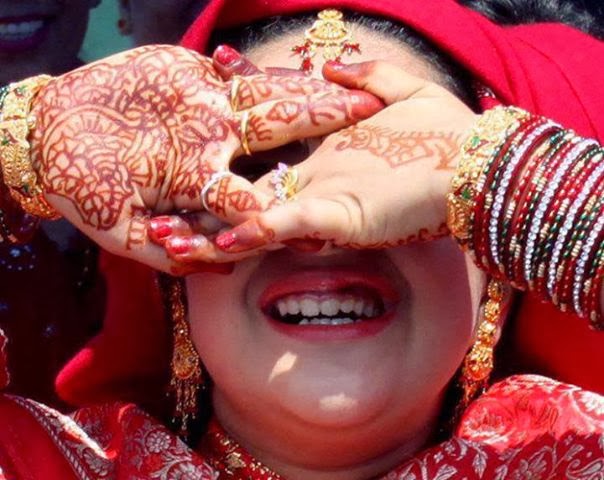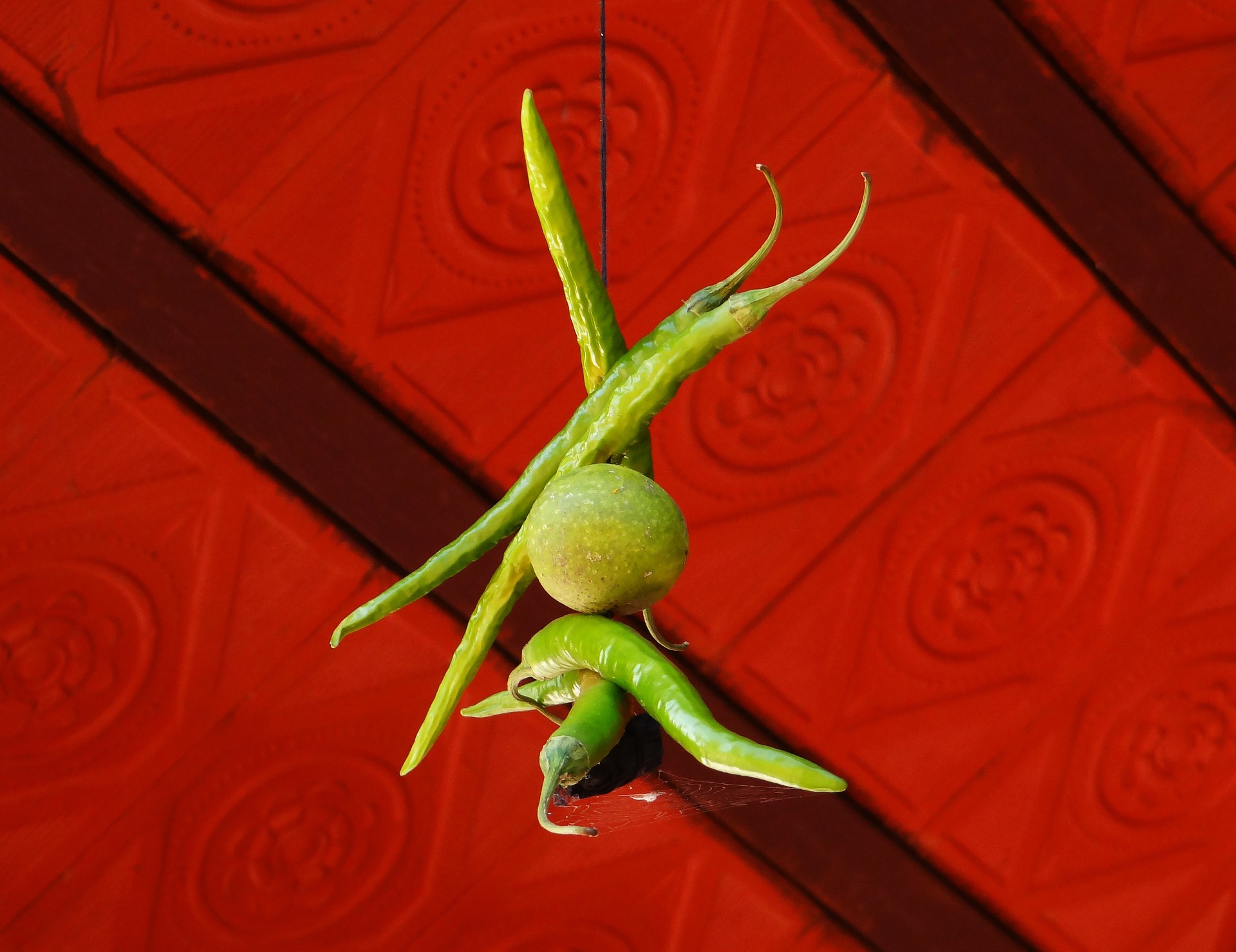Growing up in the Kathmandu valley, I have always been surrounded by a majority of friends coming from various backgrounds and ethnicities. Among these, the Newari Community is one that cannot be missed as it is the largest and presumably the oldest one here in Kathmandu. The Newari people are famous for their year-round festivities that take place on various occasions worshipping the numerous deities and depicting historical events. They have beautifully preserved their unique culture and tradition throughout the centuries of the establishment of their community by recreating and repeating these rituals year after year. If you’ve ever lived in Kathmandu, you have for sure been to a Newari Sukul Bhoj, which means a dinner/lunch on a mat instead of a table. Another thing you have surely heard is that a Newari girl is keeping her Gufa.
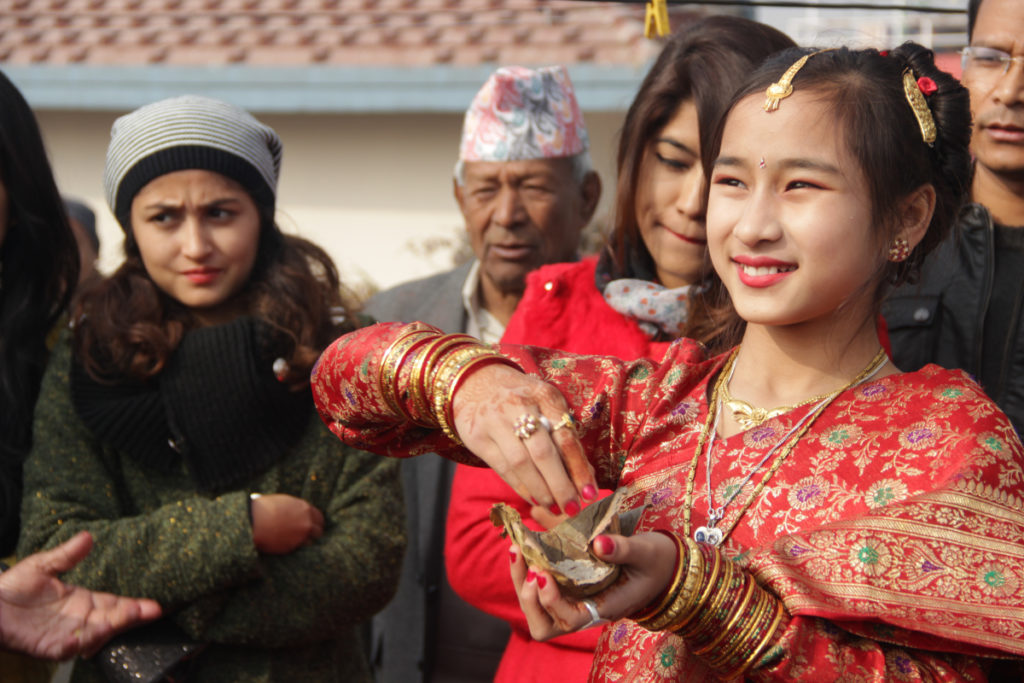
Gufa is a Newari tradition that equates to the marriage of a Newari young child to the Sun. It is believed that this marriage depicts the transition of a girl child into an adolescent and hence, must compulsorily be carried out before the girl starts to menstruate. The Sun, which lives on for eternity, protects the girl child from the bad people and omens after her marriage with the Sun. It is around the age of 12-14 that most girls must follow through with this ritual and the entire family considers this as a very auspicious occasion in the life cycle of the girl child. This ritual shows the need to maintain a relationship with the nature and the significance of each family member in the life of girl child.
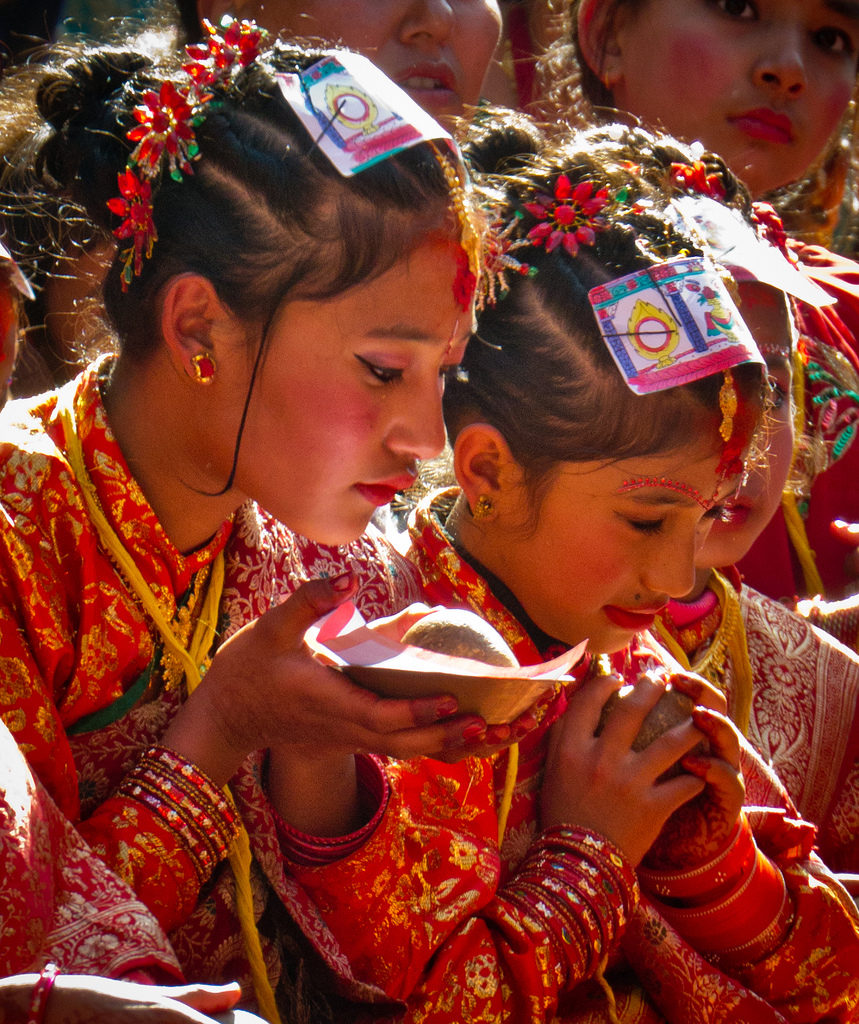
The essence of Gufa, which is a Nepali word for a den, is the darkness of a room, where the girl carrying the ritual must reside for 12 days while avoiding the Sun and the male members of the family. Mostly held during the months of February and March, the Newari girl must endure the test of time by hiding away from the Sun until the 12th day, when the “Surya Darshan” or meeting with the Sun happens. During these days, “Bahra Khayak” is made and worshipped. The head member of the family must separate a portion of the meal for the Bahra Khayak, or doll representing a ghost, every day as the girl is believed to be under the possession of evil at this time. There are various rules that the girl must follow, such as not applying oil, during her stay in the room and it is only on the 6th day of Gufa that her female relatives can visit her with fruits. The girl is then entertained with folk songs and dances performed by her friends until the 12th day, which is the day she finally sees the Sun and is married to it.
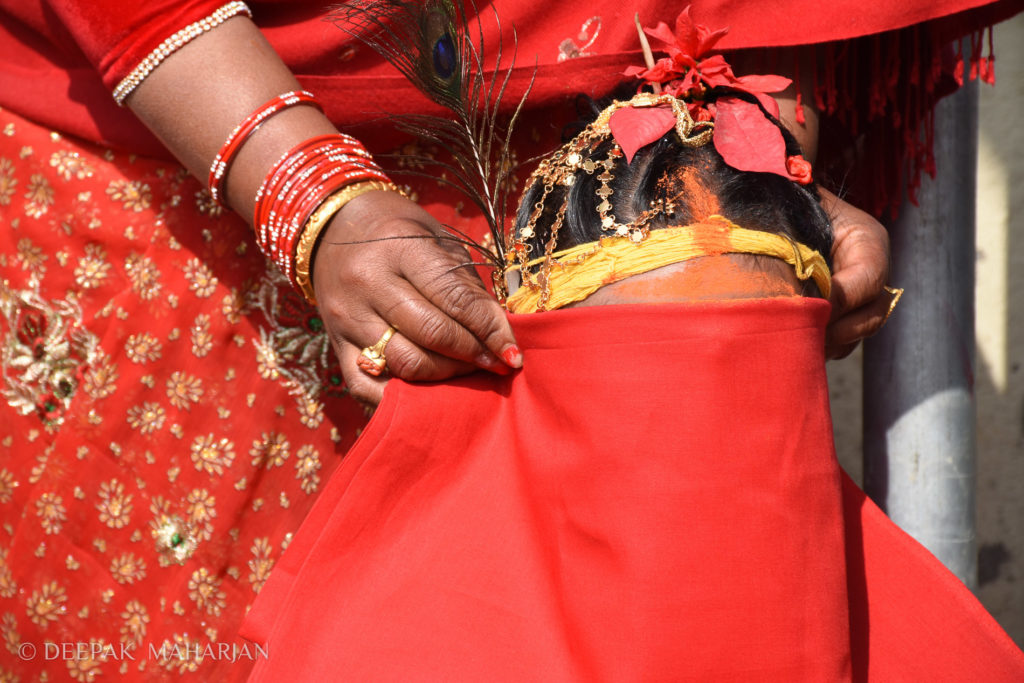
The family plays a very vital role during this ceremony of Surya Darshan on the 12th day. Each member has his/her own role to perform in order to successfully marry the girl off to the Sun God. The girl child’s father, mother, grandmother, aunt and marital uncle have the most important roles during the ceremony. While the grandmother worships Lord Ganesh and the Sun, the girl’s aunt is the one who brings her out of the darkroom after 12 days with a blindfold on. The blindfold is required to make sure that the girl sets her eyes upon the Sun before any other thing. The girl’s forehead is colored with red sindoor, a sign of being married, and the marital uncle puts oil on her hair. The parents give the girl a “sagoon”, an auspicious package of eggs, curd and other things. Thereafter, the grandmother steps in to tie the Sun and the girl as husband and wife.
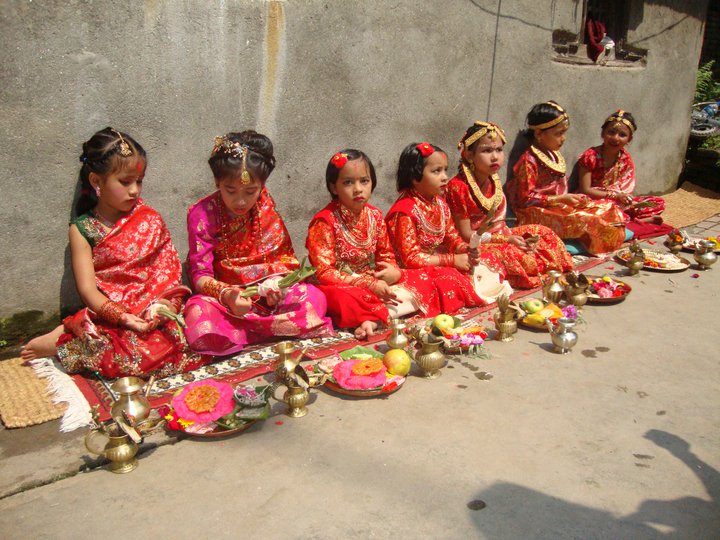
After the ceremony is completed, the Sun and the girls are pronounced husband and wife for life and a great party is arranged in the Newari style, where relatives and friends are invited to celebrate the auspicious occasion. They bring with them their blessings and other gifts for the girl child who just transitioned into an adolescent. This party was traditionally arranged as a Sukul Bhoj, but these days it is arranged in a buffet style as it is more preferred by the majority of the guests.
While originally 12 days is the length of the ritual, these days the girls are only required to stay in the Gufa for 6 days due to various reasons. Although this is due to the changing lifestyle of the people, where staying in the Gufa for 12 long days can hamper studies and work of the family members, the main reason for shortening the duration is due to the risks associated with it. The lack of nutrition and the cold dark room usually becomes the reason for the girl child falling ill and in some cases, facing death. Most parents, as well as the girl child, have a very hard time mentally and physically during this time if and when the child falls ill. There is little to no medical assistance and the girl can at no cost be brought out of the room for treatment before the completion of the ritual. A girl who dies during Gufa must be buried in the exact spot she died and the female members of the family must dig the earth out of the house to make this possible. A Newari movie titled “Barasi” depicting the true life story of a girl’s death during Gufa can give you more insights into the negative aspect of this ritual.
This tradition has the significance of showing the changing life cycle of the girl from a child into an adolescent and is carried out with the belief that the Sun will protect the child from all evils of life as her husband would. Also, since the Sun can never die, a Newari girl child who has completed her Gufa will never become a widow, even if her real-life husband passes away. Each family has its own method of carrying out this tradition but the significance remains the same to all Newari people; to ensure that their girl child has a beautiful life away from the evils of the world.
